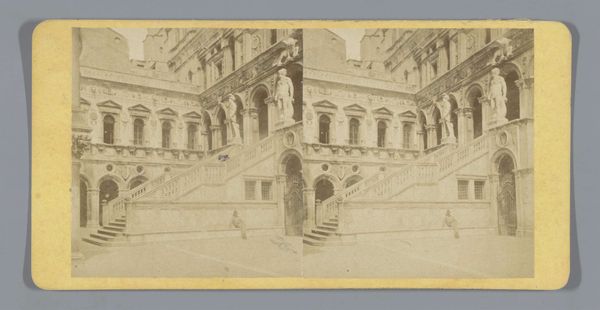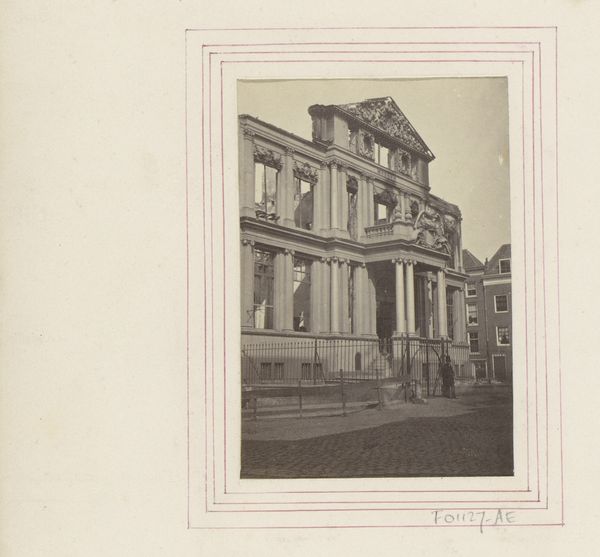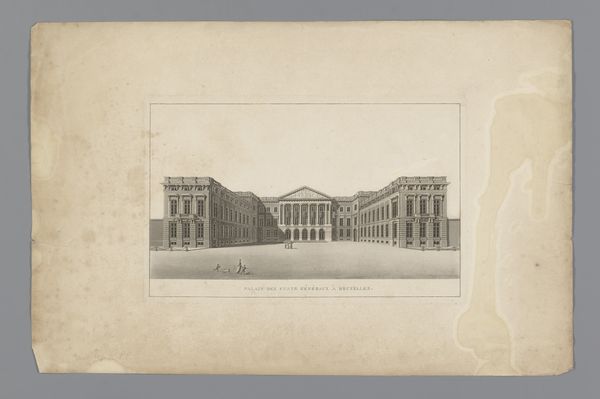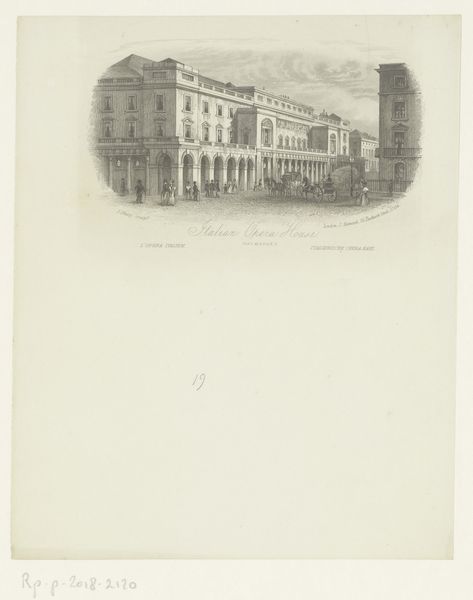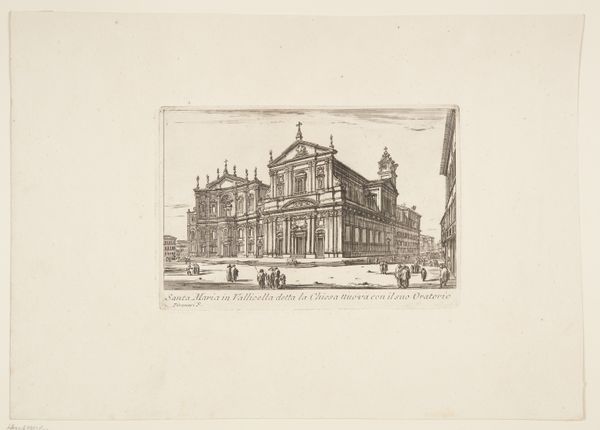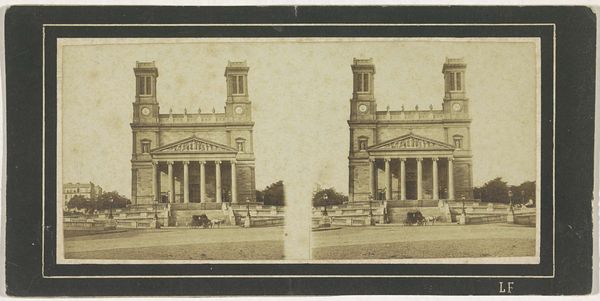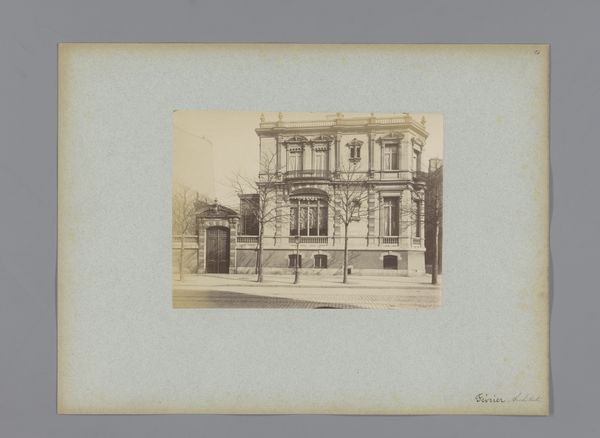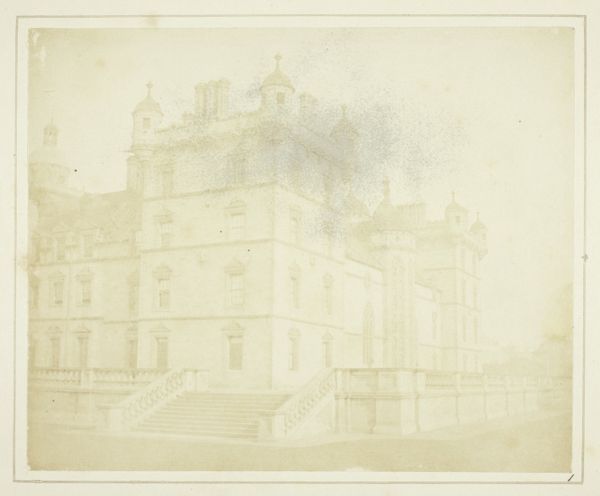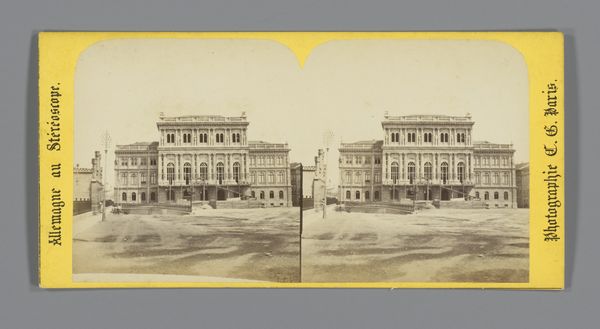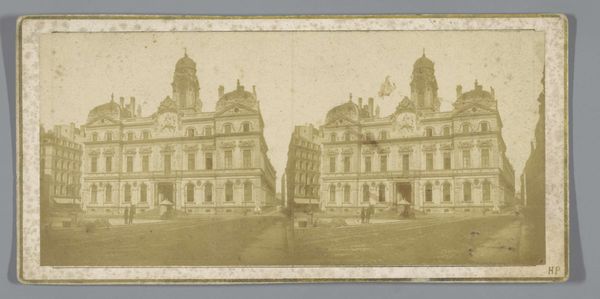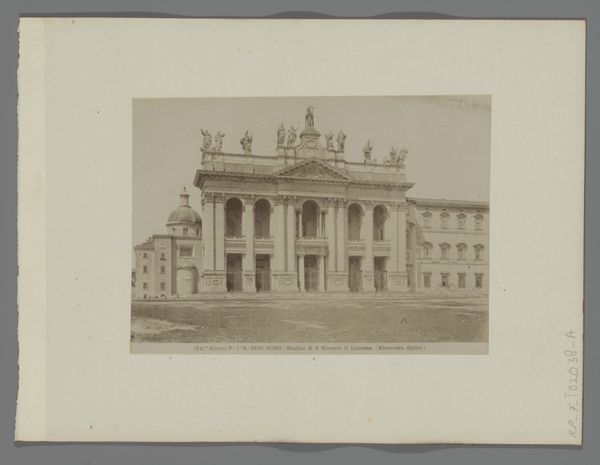
#
aged paper
#
toned paper
#
water colours
#
handmade artwork painting
#
coloured pencil
#
coffee painting
#
underpainting
#
watercolour bleed
#
watercolour illustration
#
watercolor
Dimensions: height 86 mm, width 177 mm
Copyright: Rijks Museum: Open Domain
Curator: Welcome! Let's take a moment to observe this intriguing piece, titled "Gezicht op La Madeleine in Parijs." It's believed to have been created sometime between 1850 and 1880. What strikes you initially about this rendering of the Parisian landmark? Editor: It's bathed in sepia tones, isn't it? An almost ghostly representation. The effect of the paper makes it feel like we are looking back not just at a place, but at memory itself, specifically at a city being deliberately constructed. Curator: That’s an interesting take. Indeed, the choice of watercolour and colored pencil on what appears to be aged paper creates that immediate sense of historical distance. Consider, the grandeur of La Madeleine itself, its neoclassical design a statement of imperial ambition under Napoleon and later monarchies. How does the medium speak to this grandeur? Editor: I wonder about the access inherent to these types of images as historical documentation versus, say, a painting made for an elite patron. How does the proliferation of images of La Madeleine affect its meaning for Parisians of different classes at this moment in history? The image making the landmark more approachable? Or, does the muted palette of the watercolor render this kind of accessibility, but, in fact, produce an alienation because the work doesn't have the vivacity we associate with public art? Curator: Absolutely, and it's key to remember that photography was burgeoning around this time. Images like this—likely reproduced—democratized the visual consumption of monuments like La Madeleine. They were more readily disseminated than paintings, shaping a shared visual culture. What’s compelling here is considering who might have acquired such an image. Was it part of a collection, a memento for a traveler? Editor: Precisely. We're speaking about accessibility, and I am curious about the type of viewing encouraged here: what narratives do images like these endorse by romanticizing a historical monument? After all, such monuments speak to an entire imperial history filled with state violence. How does the distance aestheticized here affect the viewer and their perspective on Parisian city planning itself? Curator: I see your point. While offering accessibility on one level, the artistic style might inadvertently gloss over the complex realities of urban life. Editor: Yes, this is the point. In my view, its appeal is inextricably bound up with its politics. It's important for audiences to engage with this artwork and consider what histories might be erased with the wash of watercolor over aged paper. Curator: Thank you, those are incredibly insightful observations about power dynamics in image production. Hopefully, viewers will be spurred to analyze what the reproduction implies when understanding broader political conditions. Editor: Indeed. Perhaps thinking about access and power, we may more critically engage with representations of monuments and the forces which produced them.
Comments
No comments
Be the first to comment and join the conversation on the ultimate creative platform.
